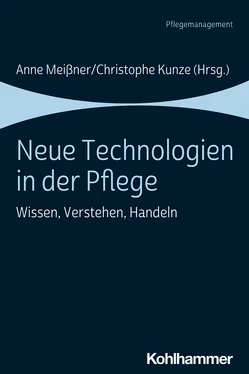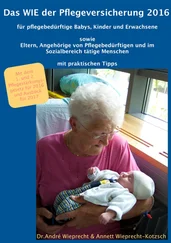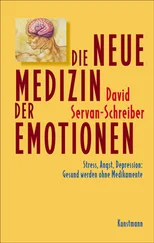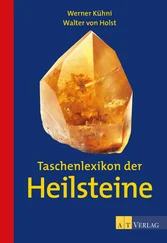Groenewoud, H.; Lange, J.; Schikhof, Y.; Astell, A.; Joddrell, P.; Goumans, M. (2017): People with dementia playing casual games on a tablet. Gerontechnology 16: 37–47.
Han, A.; Radel, J.; McDowd, J. M.; Sabata, D. (2016): Perspectives of People with Dementia About Meaningful Activities: A Synthesis. American Journal of Alzheimer’s Disease & Other Dementias 31(2): 115–123.
Harmer, B. J.; Orrell, M. (2008): What is meaningful activity for people with dementia living in care homes? A comparison of the views of older people with dementia, staff and family carers. Aging & Mental Health 12(5): 548–558.
Huizinga, J. (1946): Homo Ludens: Versuch einer Bestimmung des Spielelementes der Kultur. Basel: Akademische Verlagsanstalt Pantheon.
Ienca, M.; Fabrice, J.; Elger, B.; Caon, M.; Pappagallo, A. S.; Kressig, R. W.; Wangmo, T. (2017): Intelligent Assistive Technology for Alzheimer’s Disease and Other Dementias: A Systematic Review. Journal of Alzheimer’s Disease 56(4): 1301–1340.
Ienca, M.; Wangmo, T.; Jotterand, F. a.; Kressig, R. W.; Elger, B. (2018): Ethical Design of Intelligent Assistive Technologies for Dementia: A Descriptive Review. Science and Engineering Ethics 24(4): 1035–1055.
Joddrell, P.; Astell, A. J. (2016): Studies Involving People with Dementia and Touchscreen Technology: A Literature Review. JMIR Rehabilitation and Assistive Technologies 3(2): e10.
Kienzler, R.; Bejan, A. (2018): Wie Technik dementen Menschen bei der Erinnerung hilft: SocietyByte: Wissenschaftsmagazin des BFH-Zentrums Digital Society, April: https://www.societybyte.swiss/2018/04/01/technikgestuetzte-biografiearbeit-und-erinnerungspfle ge-am-beispiel-der-interaktiven-monitorwand-als-chance-fuer-die-versorgung-von-mensch en-mit-demenz/.
Kienzler, R.; Bejan, A.; Manske, J.; Kunze, C.; König, P. (2018): Potenziale technikgestützter Biografiearbeit und Erinnerungspflege bei Menschen mit Demenz. In: S. Boll, A. Hein, W. Heuten & K. Wolf-Ostermann (Hrsg.), Zukunft der Pflege – Innovative Technologien für die Pflege: Tagungsband der 1. Clusterkonferenz 2018. Oldenburg: BIS Verlag: 66–71.
Killick, J. (2013): Playfulness and Dementia: A Practice Guide. London: Jessica Kingsley Publishers.
Kitwood, T. (2000): Demenz: Der personenzentrierte Ansatz im Umgang mit verwirrten Menschen. Bern: Huber.
Kreutzner, G.; Radzey, B. (2019): Neue Möglichkeiten. Technikgestützte Gestaltung von Erinnerungspflege und Biografiearbeit. Dr. Med. Mabuse 44(240): 36–38.
Lazar, A.; Thompson, H.; Demiris, G. (2014): A Systematic Review of the Use of Technology for Reminiscence Therapy. Health Education & Behavior 41(1 suppl): 51S–61S.
Lorenz, K.; Freddolino, P. P.; Comas-Herrera, A.; Knapp, M.; Damant, J. (2019): Technology-based tools and services for people with dementia and carers: Mapping technology onto the dementia care pathway. Dementia 18(2): 725–741.
Manzeschke, A.; Weber, K.; Rother, E.; Fangerau, H. (2013): Ethische Fragen im Bereich Altersgerechter Assistenzsysteme. Berlin.
McCallum, S.; Boletsis, C. (2013): Dementia Games: A Literature Review of Dementia-Related Serious Games. In: M. Ma, M. F. Oliveira, S. Petersen & J. B. Hauge (Hrsg.), Serious Games Development and Applications: Springer Berlin Heidelberg: 15–27.
Müller-Hergl, C. (2012): Die Hölle der Langeweile. pflegen: Demenz(23): 8–14.
Mura, G.; Carta, M. G.; Sancassiani, F.; Machado, S.; Prosperini, L. (2018): Active exergames to improve cognitive functioning in neurological disabilities: a systematic review and meta-analysis. European Journal of Physical and Rehabilitation Medicine 54(3): 450–462.
Ngandu, T.; Lehtisalo, J.; Solomon, A.; Levalahti, E.; Ahtiluoto, S.; Antikainen, R.; Backman, L.; Hanninen, T.; Jula, A.; Laatikainen, T.; Lindstrom, J.; Mangialasche, F.; Paajanen, T.; Pajala, S.; Peltonen, M.; Rauramaa, R.; Stigsdotter-Neely, A.; Strandberg, T.; Tuomilehto, J.; Soininen, H.; Kivipelto, M. (2015): A 2 year multidomain intervention of diet, exercise, cognitive training, and vascular risk monitoring versus control to prevent cognitive decline in at-risk elderly people (FINGER): a randomised controlled trial. Lancet 385(9984): 2255–2263.
Oswald, W. D.; Ackermann, A.; Gunzelmann, T. (2006): Effekte eines multimodalen Aktivierungsprogrammes (SimA-P) für Bewohner von Einrichtungen der stationären Altenhilfe. Zeitschrift für Gerontopsychologie & -psychiatrie 19(2): 89–101.
Oswald, W. D.; Gunzelmann, T.; Rupprecht, R.; Hagen, B. (2006): Differential effects of single versus combined cognitive and physical training with older adults: the SimA study in a 5-year perspective. European Journal of Ageing 3(4): 179.
Pfändler, R.; Radzey, B. (2019): Gemeinsam neue Wege in der Erinnerungspflege erkunden. Aktivieren 2019(5): 12–17.
Phinney, A.; Chaudhury, H.; O’connor, D. L. (2007): Doing as much as I can do: The meaning of activity for people with dementia. Aging & Mental Health 11(4): 384–393.
Phinney, A.; Moody, E. M. (2011): Leisure Connections: Benefits and Challenges of Participating in a Social Recreation Group for People With Early Dementia. Activities, Adaptation & Aging 35(2): 111–130.
Radzey, B. (2019): Bewegung und Demenz. In: E. Schlesselmann (Hrsg.), Bewegung und Mobilitätsförderung. Bern: Hogrefe: 123–134.
Radzey, B. (2019): Was sollen wir trinken? Wie verlässlich sind Studienergebnisse zur Prävention von Demenz? pflegen: Demenz 2. Quartal 2019(51): 54–56.
Sixsmith, A. J.; Gibson, G.; Orpwood, R. D.; Torrington, J. M. (2007): Developing a technology ‹wish-list’ to enhance the quality of life of people with dementia. Gerontechnology 6(1): 2–19.
Smith, S. K.; Mountain, G. A. (2012): New forms of information and communication technology (ICT) and the potenzial to facilitate social and leisure activity for people living with dementia. International Journal of Computers in Healthcare 1(4): 332–345.
Swinnen, A.; de Medeiros, K. (2018): »Play« and People Living With Dementia: A Humanities-Based Inquiry of TimeSlips and the Alzheimer’s Poetry Project. Gerontologist 58(2): 261–269.
Teri, L.; Gibbons, L. E.; McCurry, S. M.; Logsdon, R. G.; Buchner, D. M.; Barlow, W. E.; Kukull, W. A.; LaCroix, A. Z.; McCormick, W.; Larson, E. B. (2003): Exercise Plus Behavioral Management in Patients With Alzheimer DiseaseA Randomized Controlled Trial. JAMA 290(15): 2015–2022.
Topo, P. (2009): Technology Studies to Meet the Needs of People With Dementia and Their Caregivers:A Literature Review. Journal of Applied Gerontology 28(1): 5–37.
Upton, D.; Upton, P.; Jones, T.; Jutlla, K.; Brooker, D.; Grove, H. (2011): Evaluation of the impact of touch screen technology on people with dementia and their carers within care home settings. Worcester.
van Alphen, H. J. M.; Volkers, K. M.; Blankevoort, C. G.; Scherder, E. J. A.; Hortobagyi, T.; van Heuvelen, M. J. G. (2016): Older Adults with Dementia Are Sedentary for Most of the Day. PLoS ONE 11(3): e0152457.
van Santen, J.; Droes, R.-M.; Holstege, M.; Henkemans, O. B.; van Rijn, A.; de Vries, R.; van Straten, A.; Meiland, F. (2018): Effects of Exergaming in People with Dementia: Results of a Systematic Literature Review. Journal of Alzheimer’s Disease 63(2): 741–760.
Walton, C. C.; Lampit, A.; Boulamatsis, C.; Hallock, H.; Barr, P.; Ginige, J. A.; Brodaty, H.; Chau, T.; Heffernan, M.; Sachdev, P. S.; Fiatarone Singh, M. A.; Valenzuela, M. (2019): Design and Development of the Brain Training System for the Digital »Maintain Your Brain« Dementia Prevention Trial. JMIR Aging 2(1): e13135.
Weber, K. (2014): Normative Herausforderungen an Technik für die Pflege im Alter. Hauswirtschaft und Wissenschaft. Europäische Zeitschrift für Haushaltsökonomie, Haushaltstechnik und Sozialmanagement 62: 116–121.
Wood, W.; Womack, J.; Hooper, B. (2009): Dying of Boredom: An Exploratory Case Study of Time Use, Apparent Affect, and Routine Acitvity Situations on Two Alzheimer’s Special Care Units. American Journal of Occupational Therapy 63(3): 337–350.
Читать дальше












